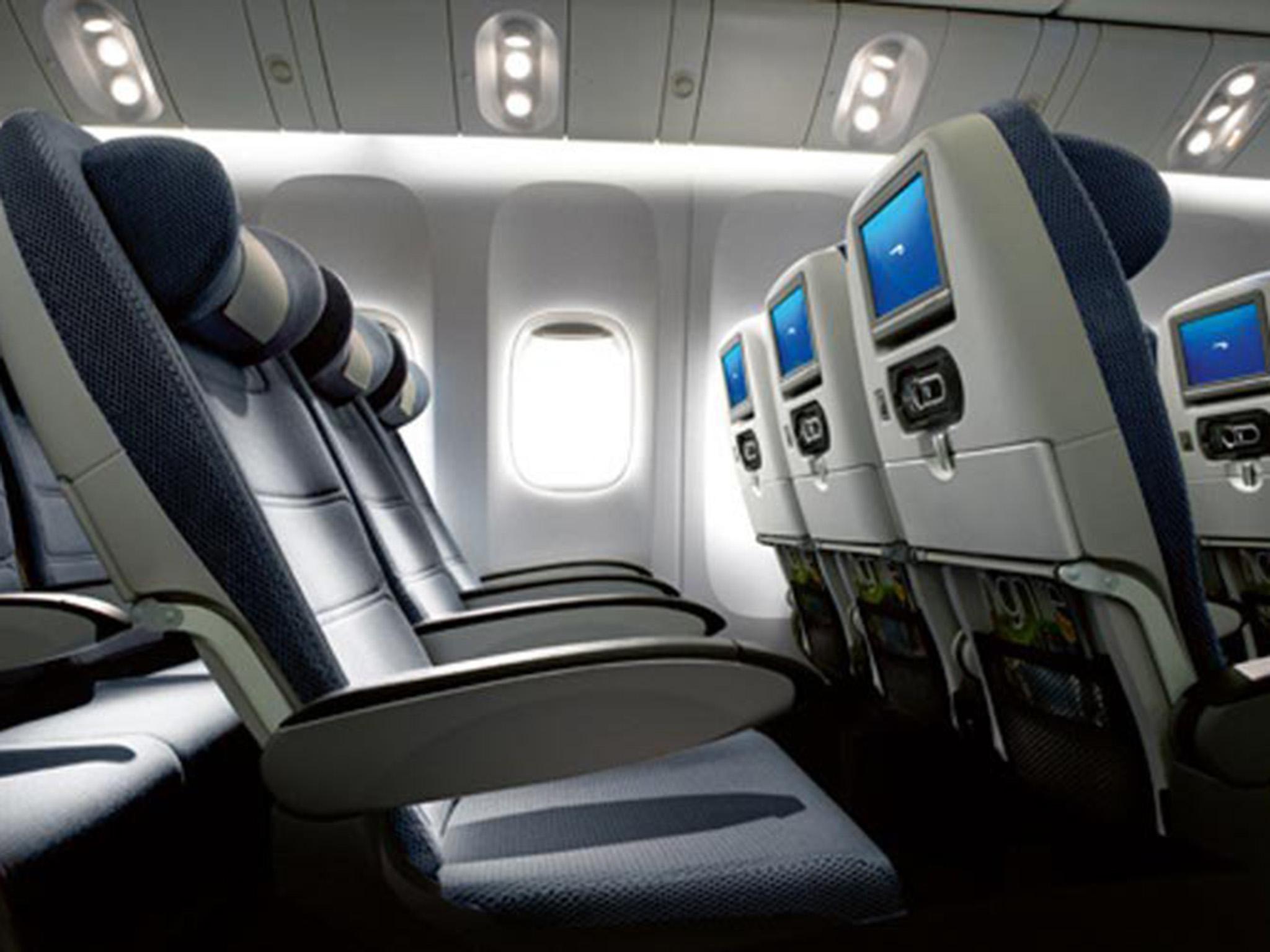Nothing dense about British Airways’ plans for densification
The airline’s plans for an extra seat in each row of economy on many of its Boeing 777s might be a smart move

Your support helps us to tell the story
From reproductive rights to climate change to Big Tech, The Independent is on the ground when the story is developing. Whether it's investigating the financials of Elon Musk's pro-Trump PAC or producing our latest documentary, 'The A Word', which shines a light on the American women fighting for reproductive rights, we know how important it is to parse out the facts from the messaging.
At such a critical moment in US history, we need reporters on the ground. Your donation allows us to keep sending journalists to speak to both sides of the story.
The Independent is trusted by Americans across the entire political spectrum. And unlike many other quality news outlets, we choose not to lock Americans out of our reporting and analysis with paywalls. We believe quality journalism should be available to everyone, paid for by those who can afford it.
Your support makes all the difference.You may have seen our exclusive story about British Airways installing an extra seat in each row of economy on many of its Boeing 777s – the backbone of the long-haul fleet. “Densification,” British Airways calls it.
Now, airlines generally like to trumpet their news by sending out press releases. But the plans to densify were quietly revealed at a Capital Markets Day aimed at investors, not passengers. Nevertheless a call to British Airways confirmed the plan. Squeezing in more bums on seats in the same size plane makes sense given BA’s rivals to the east (Emirates, Etihad and a dozen more) and the success of Norwegian across the Atlantic. Indeed, BA’s boss, Alex Cruz, made the point that the densification of the 777 would bring seat costs below Norwegian’s 787.
Nonetheless, the move triggered plenty of responses to The Independent.
“Funny how for years they've had a strict weight allowance for luggage but suddenly they've decided the weight of an extra 52 bodies is fine,” commented Rabid Raccoon, while Keevil81 added: “The Western world is getting fatter and seats are getting smaller. Doesn’t seem to add up.”
John said: “The plans remind me of those old diagrams of the slave ships, the ‘merchandise’ crammed into every available space like sardines.
Cavern predicted: “This is a blow for slim passengers too. The curvy passenger sat next to them will spill over even more.” And Steve tweeted: “So the only good thing about BA now is a British Captain’s reassuring voice when you board in far flung places?”
Well, no. There is much that is good about British Airways. It is a premium brand with a well-earned reputation for excellent service. And for the two classes of travel that are presently most profitable for BA, improvements are on the way. The high-performing cabins are Club World and World Traveller Plus – or, if you prefer the generic descriptions, business and premium economy.
The World Traveller Plus cabin on board those British Airways 777s is being doubled in size, from 24 to 48. Since its eight-abreast configuration remains the same while personal space shrinks in economy, presumably it will be even more in demand by business travellers seeking space to work or relax without paying the often high fares of Club World. Russ Williams thinks likewise, as he tweeted: “Urgh it's tight enough as it is! Is this a dastardly ploy to encourage upgrades?!”
The space race is evident in the seating plans for the new-look Boeings. Space for those extra two dozen World Traveller Plus seats is being created by removing just eight Club World flat-beds.
BA’s business class is what keeps the whole airline aloft, and therefore I sense the airline cares more about it than any other part of the aircraft. British Airways is investing £400m to keep Club World competitive, and is promising a “new ambience to maximise sleep” and “better soft product including bedding”. Don’t tell the folk at the back on the 6,300-mile long haul to Lima.
There's no First cabin to Lima – in common with almost all the routes from Gatwick, with the odd exception such as Bermuda. First is in the same category as economy: not performing as well as BA would wish. What’s wrong? “NPS high but paid load factor low,” is the crisp comment on one of the slides shown to analysts. NPS, as you know, is “net promoter score”, a proxy for how happy the passengers are. And “paid load factor low” means hardly anyone is actually paying the appropriate tariff – instead First is the refuge of upgradees (and, from my observation, partners of crew). So the number of First seats is being cut back – to just eight on the next lot of Boeing 787s. And the cabin is being removed completely from “routes with limited demand”.
Ben Schlappig, who writes the One Mile at a Time blog, says: “The race to the bottom continues for British Airways”. To me, it looks more like a race to the middle.
Click here to view our latest travel offers with Independent Holidays
Join our commenting forum
Join thought-provoking conversations, follow other Independent readers and see their replies
Comments